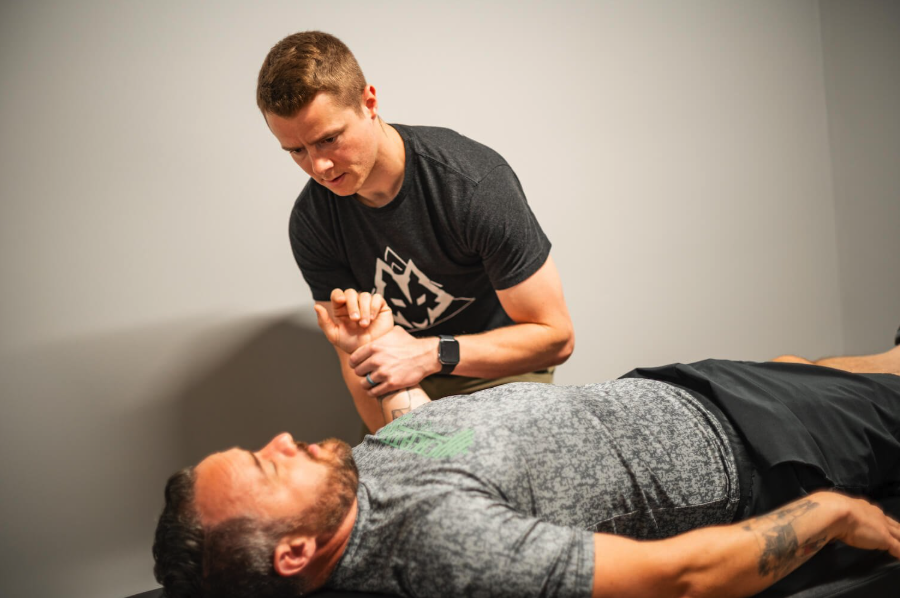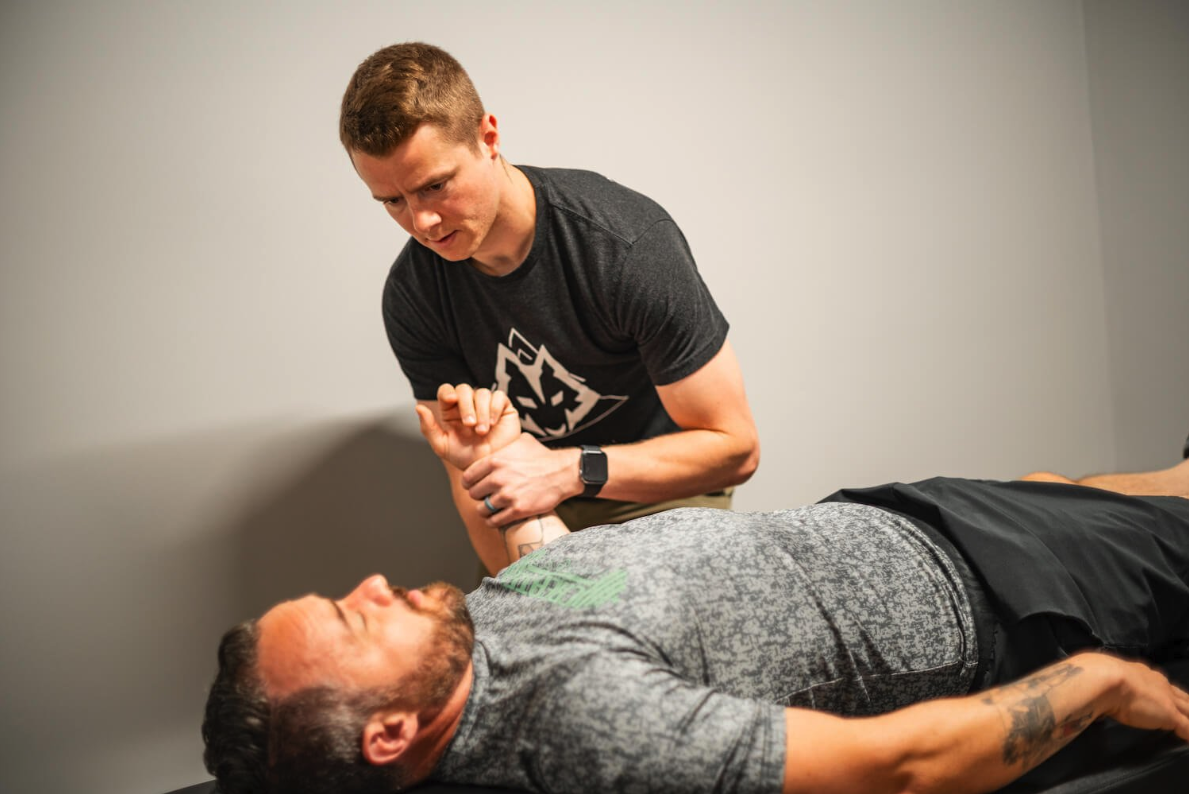Rock Climbing & Shoulder Health: How to Stay Strong & Injury-Free

Rock climbing challenges the body in ways few other sports do, and the shoulders often take the brunt of the effort. Whether you’re pulling through steep overhangs, reaching for distant holds, or locking off in awkward positions, climbing demands exceptional strength and stability from the shoulder muscles and joints. Each movement places significant forces on structures like the rotator cuff, labrum, and surrounding tendons.
Unlike many sports, climbing involves sustained isometric holds and sudden dynamic moves, which can place repetitive strain on the shoulders. Over time, these intense demands can lead to muscle fatigue, imbalances, and even microtrauma to the tissues supporting the shoulder. Climbers who train frequently or push into higher grades are especially vulnerable to developing overuse injuries.
READ: The Most Common Injuries in Outdoor Athletes (And How to Reduce Them)
Understanding how climbing stresses the shoulder is crucial for injury prevention. By recognizing the physical challenges of the sport, climbers can take proactive steps to strengthen their shoulders, improve technique, and reduce the risk of injuries that could keep them off the wall.

Common Shoulder Injuries Climbers Face
Because rock climbing places unique and intense demands on the upper body, shoulder injuries are among the most frequent problems climbers experience. While every athlete’s situation is different, a few injuries tend to show up repeatedly in the climbing community.
Rotator cuff strains or tears are common due to the high forces required for pulling and stabilizing. Small tears can cause persistent soreness or weakness, while more significant injuries might limit a climber’s ability to reach overhead or bear weight on the arms.
Labral injuries involve damage to the ring of cartilage around the shoulder socket. Moves like powerful lock-offs, dynamic catches, or falls can strain this tissue, leading to pain, clicking sensations, or a feeling that the shoulder is unstable.
Shoulder “impingement” develops when tendons or other soft tissues develop irritation under the bones of the shoulder joint. Climbers may feel discomfort when reaching overhead or performing repetitive moves that stress the joint in certain positions.
Even minor shoulder discomfort can worsen without proper care, affecting a climber’s ability to train or enjoy time on the wall. Recognizing early signs of injury and seeking guidance from a specialist can help prevent a minor problem from turning into a long-term issue.
READ: The Role of Core Strength in Outdoor Sports: How to Build a Resilient Body
How Physical Therapy Helps Climbers in Tacoma
For climbers dealing with shoulder pain or hoping to prevent injuries altogether, physical therapy can be a game changer. At The Path PT in Tacoma, physical therapists understand the specific demands of climbing and how to help athletes stay strong, mobile, and injury-free.
Physical therapy goes beyond simply treating pain. For climbers, it starts with a detailed assessment of how the shoulders and upper body move both on and off the wall. Therapists look for weaknesses, imbalances, or movement patterns that might contribute to strain or injury. By identifying these issues early, they can develop targeted strategies to improve mechanics and reduce stress on vulnerable structures.
At The Path PT, climbers receive individualized treatment plans tailored to their sport. This might include hands-on techniques to relieve stiffness, exercises to strengthen stabilizing muscles, and education about how to modify training to avoid overloading the shoulders. The goal is to help climbers return to their sport safely while building resilience to handle future challenges.
Working with a physical therapist who understands climbing makes a significant difference. It means treatment is not only focused on healing but also on maintaining performance, so climbers can keep pushing their limits without unnecessary setbacks.
Key Exercises for Shoulder Strength and Stability
Strong, stable shoulders are essential for climbers who want to stay injury-free and perform at their best. At The Path PT, climbers learn exercises designed specifically to target the muscles and movement patterns critical for safe, efficient climbing.
READ: Conquer the Outdoors: How Physical Therapy Enhances Performance for Outdoor Athletes
Exercises often focus on strengthening the rotator cuff and scapular stabilizers — the small but powerful muscles that keep the shoulder joint secure during dynamic and sustained movements. Movements like external rotation with a resistance band or scapular retraction drills help build the endurance and control needed for repeated pulls, lock-offs, and overhead reaches.
Another crucial area is improving mobility and flexibility. Tightness in the chest, lats, or the back of the shoulder can change climbing mechanics, increasing stress on joints and tendons. Gentle stretching and mobility work can help climbers move more freely and reduce strain on vulnerable tissues.
Core stability also plays a role in shoulder health. A strong core allows climbers to maintain body tension and reduce excessive load on the arms and shoulders. Exercises like planks, dead bugs, and controlled rotational work are often included in a climber’s training plan.
The key is not just getting stronger but moving with better control and balance. Climbers who include these exercises in their routine often find they can handle harder routes, longer sessions, and fewer injuries.
When to Seek Help from a Climbing-Savvy Physical Therapist
Climbing comes with its share of aches and pains, but it’s important to know when discomfort might be more than just muscle fatigue. Persistent soreness, sharp pain during certain moves, or a sense of instability in the shoulder are signs that professional help could be needed.
Climbers should consider seeing a physical therapist if:
- Shoulder pain doesn’t improve after a few days of rest
- Pain limits the ability to climb or perform daily activities
- There’s weakness, numbness, or tingling in the arm
- The shoulder feels like it might “slip” out of place
- Pain returns quickly each time climbing resumes
At The Path PT in Tacoma, the team understands both the physical and mental importance of climbing for athletes. They offer specialized care that addresses not only the injury itself but also how to safely return to the wall. Climbers receive guidance on adjusting training loads, improving technique, and building strength for long-term shoulder health.
Seeking help early can prevent a minor issue from becoming a bigger setback. For climbers passionate about staying active and pain-free, working with a physical therapist who understands the sport is one of the best investments in their climbing journey.
Sign up for our newsletter
Join our community and receive exclusive physical therapy insights, training strategies, and recovery techniques tailored for active people.
